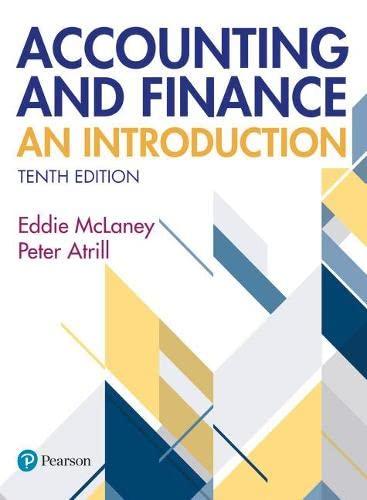Question
December 31, 2020 December 31, 2019 Contributions due in less than one year $2,293,775 $2,305,753 Contributions due in one to five years 5,454,320 6,272,198 Contributions
December 31, 2020 December 31, 2019
Contributions due in less than one year $2,293,775 $2,305,753
Contributions due in one to five years 5,454,320 6,272,198
Contributions due in more than five years 1,098,384 1,696,768
Total Contribution $8,846,479 $10,274,719
Less
Allowance for bad debts 166,972 398,723
Discount to net present value 497,812 710,124
Net Contribution $ 8,181,695 $ 9,165,872
Without Donor's Restrictions With Donor's Restrictions
2020 2019 2020 2019
Contributions due in less than one year $2,293,775 $2,305,753
Contributions due in one to five years 5,454,320 6,272,198
Contributions due in more than five years $1,098,384 $1,696,768
The discount rates used on long-term promises to give were 3 percent in 2020 and 2019.
- Suppose that the foundation was to prepare the statement of financial position in columnar form, one column for net assets without donor restrictions, and another for net assets with donor restrictions. In which column would these receivables be reported? Explain.
- Suppose that on December 31, 2020, the foundation collected $ 500,000 of the $1, 098,384 due over a five-year period. Prepare the appropriate journal entries to record the collection of the $500,000 and to adjust the remaining balance in the receivables account. Be sure to recognize interest on the balance of the contributions due in over five years and one to five years (less the discount).
- Another note to the statements indicates that the foundation has made grants to various other organizations. Some of these are payable over a five-year period. Accordingly, it adjusted its grants payable account to take into account the time value of money and applied a discount rate of 3 percent. However, per the note, the grants are classified as Level 3 in accordance with the fair value hierarchy and have been valued using an income approach. What are the different valuation techniques? What is level 3 classification? Explain this in simple words.
Step by Step Solution
There are 3 Steps involved in it
Step: 1

Get Instant Access to Expert-Tailored Solutions
See step-by-step solutions with expert insights and AI powered tools for academic success
Step: 2

Step: 3

Ace Your Homework with AI
Get the answers you need in no time with our AI-driven, step-by-step assistance
Get Started


